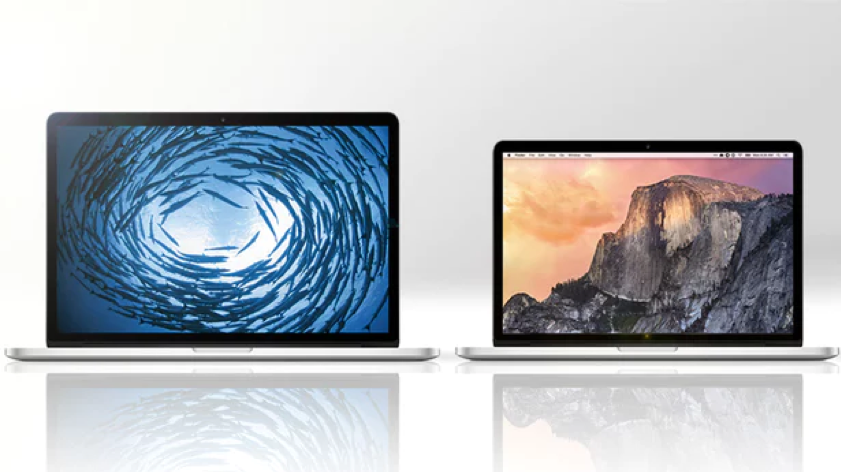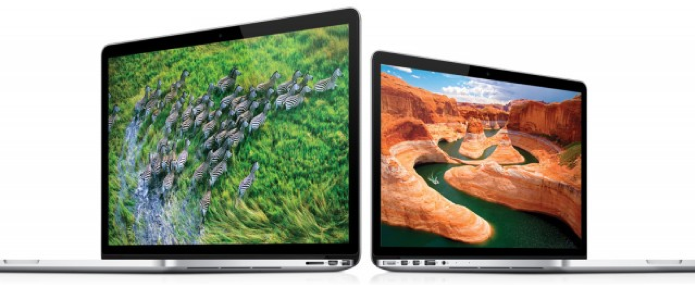What are all the differences between the 13-Inch “Early 2015” and the 15-Inch “Mid-2015” Retina Display MacBook Pro models? Which is best for my needs?

Retina Display MacBook Pro 13-Inch “Early 2015” vs 15-Inch “Mid-2015”: What’s the Difference? Source:
Apple stopped updating its 15-in Retina MacBook but continued its precedent, the 13-in model. Many versions from the same lineup are still available in the market up to this day, which makes users wonder – is there really a difference between the 13-Inch Early 2015 and 15-Inch Mid 2015 Models of Retina Display MacBook Pros?
Technically, the 13-in Early 2015 line covers models like the MacBook Pro “Core i7” 3.1 13,” “Core i5 2.7 13,” and the “Core i5 2.7 13.” On the other hand, the 15-in Mid 2015 type has the current “Core i7 2.5 15 Dual Graphics,” “Core i7 2.8 15,” and “Core i7 2.2 15.” However, the latter did not continue releasing “Core i7 2.8 15,” and “Core i7 2.5 15” which results in limited versions to pick from.
At first look, the two models are almost identical. They have the same ports and keyboards. They resemble one another. But, there is more than their aesthetics because they have vital differences worth nothing, most especially in performance. These distinctions are not very obvious. This is why we have to make a point-to-point comparison so that it’s easier for you to determine which model suits your needs and usage.

15-inch and 13-inch Apple MacBook Pro with Retina Display
Here are the main differences between the two models:
External
Externally, the 13-in and 15-in models are almost similar to one another. They look the same if it wasn’t for their size which is a major difference you’ll quickly notice. Basically, the two versions used the sealed aluminum with a glass design that gives them uniform thickness. Both of them are also 0.71-inch thick. However, they weigh differently. The “Early 2015” model is 3.46 lbs or almost 1.57 kg; while the “Mid 2015” model is 4.46 lbs or 2.02 kg. This means that 15-in models are slightly heavier.
Both 13-in and 15-in MacBook Pro models employed a LED-backlight widescreen with high-resolution, and quality retina display. The only difference is the resolutions and size they utilized. For instance, the “Early 2015” models featured a 13.3” widescreen with 2560×1600, 227 ppi displays. On the other hand, “Mid 2015” versions have a 15.4” widescreen with 2880×1800, 220 ppi displays. Any color looks vibrant in these laptops though. You will see the finest detail of a 4K trailer clearly. Based on the colorimeter of Laptopmag, the 13-inch MacBook Pro has a 125.3 sRGB gamut rating. This is why the model shines brighter than the Mid 2015 model.
These two lines have dual microphones, integrated stereo speakers, full-sized chiclet-style backlit keyboards, and 720p FaceTime HD webcams. Both also have the force Touch trackpad – a clear glass sensitive solution that senses movement for 3-dimensional input.
According to Apple, this trackpad is a built-in force sensor that gives a uniform response through pressure. It allows a third click when you press the middle button. This is referred to as the Force Click. The haptic feedback system of this technology stimulates every click. The trackpad doesn’t involve any physical movements anymore, so it’s more natural to use.
Connectivity
These two models share the same connectivity. Both of them featured the 4.0 Bluetooth, 802.11 ac Wifi, an SDXC card slot, an HDMI port, two Thunderbolt 2 ports, a MagSafe 2 power connector port, and two USB 3.0 ports.
They are also compatible with the Thunderbolt-to-Firewire 800 adapters, and Thunderbolt-to-Gigabit Ethernet; however, you have to pay an additional cost to have them.
Identification
The external Model Numbers of the 13-in and 15-in Retina Display MacBook Pro models are the same as previous models of similar display size. Hence, the “Early 2015” version uses the A1502 model number; while the “Mid 2015” model has the A1398 model number.
To make unique identification simpler, and more convenient, you must be well-versed with Model Identifiers, found in software, and EMC Numbers. They will make your task easier.
Here at Techable, our goal is to help you evaluate your Apple product expertly. We have keenly consolidated the important details you should learn about your product. Here’s a sample:
| Retina MacBook Pro | Year of Release | Model ID | EMC |
| 13-inch | Early 2015 | MacBookPro 12,1 | 2835 |
| 15-inch (Integrated Graphics) | Mid 2015 | MacBookPro11,4 | 2909 |
| 15-inch (Dual Graphics) | Mid 2015 | MacBookPro11,5 | 2910 |
We also have a reliable database that can identify the version of the Retina Display MacBook Pro model you own with only the use of your serial number.
Internal
The internal configuration of the Early 2015 and Mid 2015 versions is almost common. Both of them feature a PCIe 2.0 x 4 storage module interface. Their battery is also built in the same place. Other than these, they have remarkable differences that set them apart from one another. What are these?
Early 2015 models include dual-core processors – Intel “Core i5” or “Core i7” and an 8GB onboard 1866 MHz LPDDR3 SDRAM memory as the default setting. If you prefer more, you can upgrade your RAM to 16GB once you buy your unit with only an additional payment. There is also an integrated Iris Graphics 6100 graphics processor that also utilize the memory in the system. These are the internal specifications of the 13-in MacBook Pro.
On the contrary, the Mid 2015 edition is different for it employs a faster quad-core in its “Core i7” processor, 16GB onboard 1600 MHz DDR3L SDRAM which doesn’t allow any upgrades, and either a dual graphics processor such as the AMD Radeon R9 M370X with 2 GB dedicated GDDR5 SDRAM and an Iris Pro 5200 graphics processor or a single Iris Pro 5200 graphics processor.
Once you buy yours, Apple does not recommend upgrades; however, both of these models feature the identical proprietary “blade” type SSD – or the PCIe-based storage. You can replace this part and upgrade it eventually for as long as you know how. We have a detailed explanation of these SSD generations here.
There is also a difference in the battery runtime of the two models. If you need a laptop with more runtime, then the 13-in model is for you because it lasts from around 10 to 12 hours; on the other hand, the 15-in model is estimated to last for only 9 hours.
Summary of Comparison
To summarize, the differences between the 13-in and 15-in Retina Display MacBook Pro models lie in their memory, processors, video processors, storage, identifiers, battery life, original prices, and displays.
13” Early 2015 Int. Graphics 15” Mid 2015 Int. Graphics 15” Mid 2015 Dual Graphics
| Current: | Yes | Yes | No |
| Processors: |
I5-5257U I5-5287U I7-5557U |
I7-4770HQ I7-4870HQ I7-4980HQ |
I7-4870HQ I7-4980HQ |
| Cores: | 2 | 4 | 4 |
| Speed: |
2.7 GHz 2.9 GHz 3.1 GHz |
2.2 GHz 2.5 GHz 2.8 GHz |
2.5 GHz 2.8 GHz |
| Turbo Boost: |
3.1 GHz 3.3 GHz 3.4 GHz |
3.4 GHz 3.7 GHz 4.0 GHz |
3.7 GHz 4.0 GHz |
| L3 Cache: | 3 MB, 4 MB | 6 MB | 6 MB |
| Std. Storage: | 8 GB | 16 GB | 16 GB |
| Storage Upgrade: | Proprietary | Proprietary | Proprietary |
| Std. RAM: | 8 GB | 16 GB | 16 GB |
| Max RAM: | 16 GB† | 16 GB† | 16 GB† |
| RAM Type: | 1866 MHz LPDDR3 | 1600 MHz DDR3L | 1600 MHz DDR3L |
| Video Card: | Iris 6100 | Iris Pro 5200 |
Iris Pro 5200 AMD Radeon R9 M370X |
| GDDR5: | Integrated Only | Integrated/128 MB* | 2 GB |
| Display: | 13.3″ | 15.4″ | 15.4″ |
| Std. Resolution: | 2560×1600 (227 ppi) | 2880×1800 (220 ppi) | 2880×1800 (220 ppi) |
| Battery Life: | 10-12 Hours | 9 Hours | 9 Hours |
| Battery Design: | Glued | Glued | Glued |
| Height: | 0.71 | 0.71 | 0.71 |
| Width: | 12.35 | 14.13 | 14.13 |
| Depth: | 8.62 | 9.73 | 9.73 |
| Weight: | 3.46 lbs | 4.46 lbs | 4.46 lbs |
| Order No (US) |
MF839LL/A MF840LL/A MF841LL/A |
MJLQ2LL/A | MJLT2LL/A |
| EMC No.: | 2835 | 2909 | 2910 |
| Model ID: | MacBookPro12,1 | MacBookPro11,4 | MacBookPro11,5 |
| Orig. Price (US): |
US$1299 US$1499 US$1799 |
US$1999 | US$2499 |
| Orig. Price (UK): |
£999 £1199 £1399 |
£1599 | £1599 |
| Orig. Price (CA): |
C$1549 C$1799 C$2199 |
C$2449 | C$3049 |
| Orig. Price (AU): |
A$1799 A$2099 A$2499 |
A$2799 | A$3499 |
The “Early 2015” 13-In Retina Display MacBook Pro models allow users to upgrade their RAM up to 16GB on the initial purchase of the unit; however, once you have bought the product, the upgrade is no longer encouraged.
Additional memory bandwidth is present in the Intel Iris Pro 5200 graphics processor because it also uses the 1 GB memory in the graphics function of the system. On top of this, it also has the “Crystalwell” with 128 MB capacity on the DRAM CPU Package. This is the superior version of the integrated graphics subsystem which increases display performance.
What’s the most ideal model for you?
The answer is that it depends on your needs. If you lean towards a fast and high performing Retina Display MacBook Pro model even in a larger and heavier package, the 15-in, Mid 2015 version is for you because that is where this model is good at.
Anyone who focuses on the aesthetics of their laptop – big and beautiful display and sleek look, but does not mind paying extra for internal upgrades, and legacy connectivities should consider the 15-in model.
On the other hand, those who prefer a reasonable price-to-performance ratio can start with the entry level 15-in model which is the MacBook Pro “Core i7” 2.2 15” (IG). When it comes to optimum performance, most especially in the graphics, a more sophisticated version is waiting through the MacBook Pro “Core i7” 2.5 15” (DG). A custom processor-upgraded choice is also available with the MacBook Pro “Core i7” 2.8 15” (DG).
If you need a longer battery life more than anything else in a laptop, the right model for you is the 13-in Retina Display MacBook Pro. This is the perfect match for users who do not give high regard to performance. This Early 2015 version is lighter and cheaper too.
Indeed, the best model depends on your needs as a laptop user. Assess what you want in a device first to know which version is superior.
Browse Top Categories
Popular Mac Categories
Popular Device Categories
Related Pages
No related pages found.
Welcome to Techable
At Techable, we believe technology should be accessible to everyone. Founded in 2016, we have built a transparent marketplace where users can confidently buy and sell tech. With the highest reviews in the industry, we are proud to lead the way in renewed technology.
The Smart Way to Buy Tech
It feels good to save
Love Tech?
So Do we. Stay Up To Date With The Latest In Tech.
[contact-form-7 id=”27611″ title=”footer form”]
Subscribe To Our News And Get A 10% Discount Coupon!
Quick Links
Techable.com is provided "as is" without warranty of any kind whatsoever. Techable.com, and the author thereof, shall not be held responsible or liable, under any circumstances, for any damages resulting from the use or inability to use the information within. For complete disclaimer and copyright information please read and understand the Terms of Use and the Privacy Policy before using Techable.com. Use of any content or images without expressed permission is not allowed, although links to any page are welcomed and appreciated.
Quick Links
Quick Links
Techable.com is provided "as is" without warranty of any kind whatsoever. Techable.com, and the author thereof, shall not be held responsible or liable, under any circumstances, for any damages resulting from the use or inability to use the information within. For complete disclaimer and copyright information please read and understand the Terms of Use and the Privacy Policy before using Techable.com. Use of any content or images without expressed permission is not allowed, although links to any page are welcomed and appreciated.
$10 off your next order






